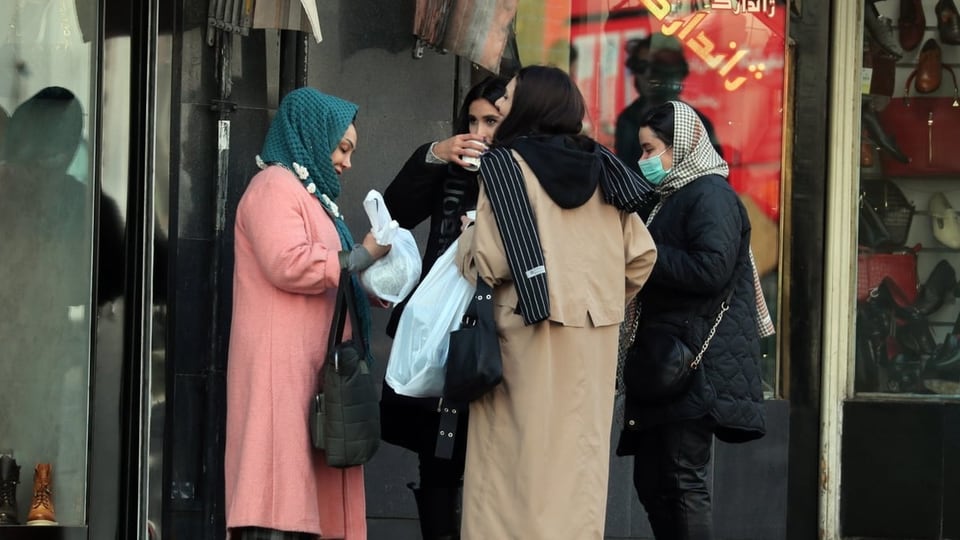People in Iran have been demonstrating since mid-September – against the dress code for women and the Islamic regime in general. The ARD correspondent Katharina Willinger was able to visit the capital Tehran. In an interview, she describes what she found out there.
SRF News: Did you still observe protest rallies in Tehran?
Catherine Willinger: No. From other regions – such as the Kurdish areas – one hears about protests again and again.
Did you see other forms of protest?
Yes, definitely. The protest has arrived in the everyday lives of Iranians. This can be seen, for example, in graffiti on many house walls. There are slogans critical of the regime such as “Down with the Islamic Republic” or “Death to the dictator”.
Many women in Tehran no longer wear headscarves – a very courageous form of protest.
Even if the sayings are immediately painted over in many places, they can be seen on every third or fourth house wall. In addition, many women in Tehran no longer wear headscarves. This is a very courageous form of protest, because this offense is still being punished and punished by the judiciary.
Are the moral police, who have always ensured that headscarves are compulsory, no longer present in the streets?
I never saw the vice squad. It was also confirmed to me that she had not been on the road in the last few weeks. Apparently the regime is trying to calm the situation, it doesn’t want to add fuel to the fire and prevent a new case like that of Jina Mahsa Amini, which led to the protests.
The women fear they could be held accountable using digital facial recognition programs.
But the women I spoke to told me they didn’t feel safe at all. They are convinced that the current situation is just a temporary tactic used by the mullahs’ regime. They feel like they are being watched by surveillance cameras and fear that digital facial recognition programs will one day hold them accountable. But that would mean: Only the form of repression would change – with the same goal: to curtail women’s freedom.

Legend:
At least in Tehran, many women now dare to take to the streets without a headscarf. But many fear that the regime could use camera surveillance and facial recognition to hold them accountable later.
Keystone/Abedin Taherkeareh
How freely could they work in Tehran?
It was very difficult – partly because I knew I was putting the people I was talking to at risk. We knew that we were constantly being monitored. So I tried to spontaneously address women on the street without exchanging contact details.
The women are very afraid of the regime – but they still hope for a change in the system.
It became clear: The women in Tehran feel completely insecure and not free. They are very afraid of the regime, which has hit back with great violence and executions. Nevertheless, they hope for a change in Iran and that the protests will continue because they want a system change.
So there is still a revolutionary mood?
I guess so. Because protest not only includes what’s happening on the streets, but also what’s going on in people’s minds. Many very young people have taken part in the protests in recent weeks.
Such a system has no future in the long run.
They have never experienced anything other than the mullah regime, they are indoctrinated by the Islamic educational system and by the state media – and yet they turned against the system with great anger and hatred. Such a system has no future in the long run – even if nobody can estimate when it will actually end.
The conversation was conducted by Simone Hulliger.
